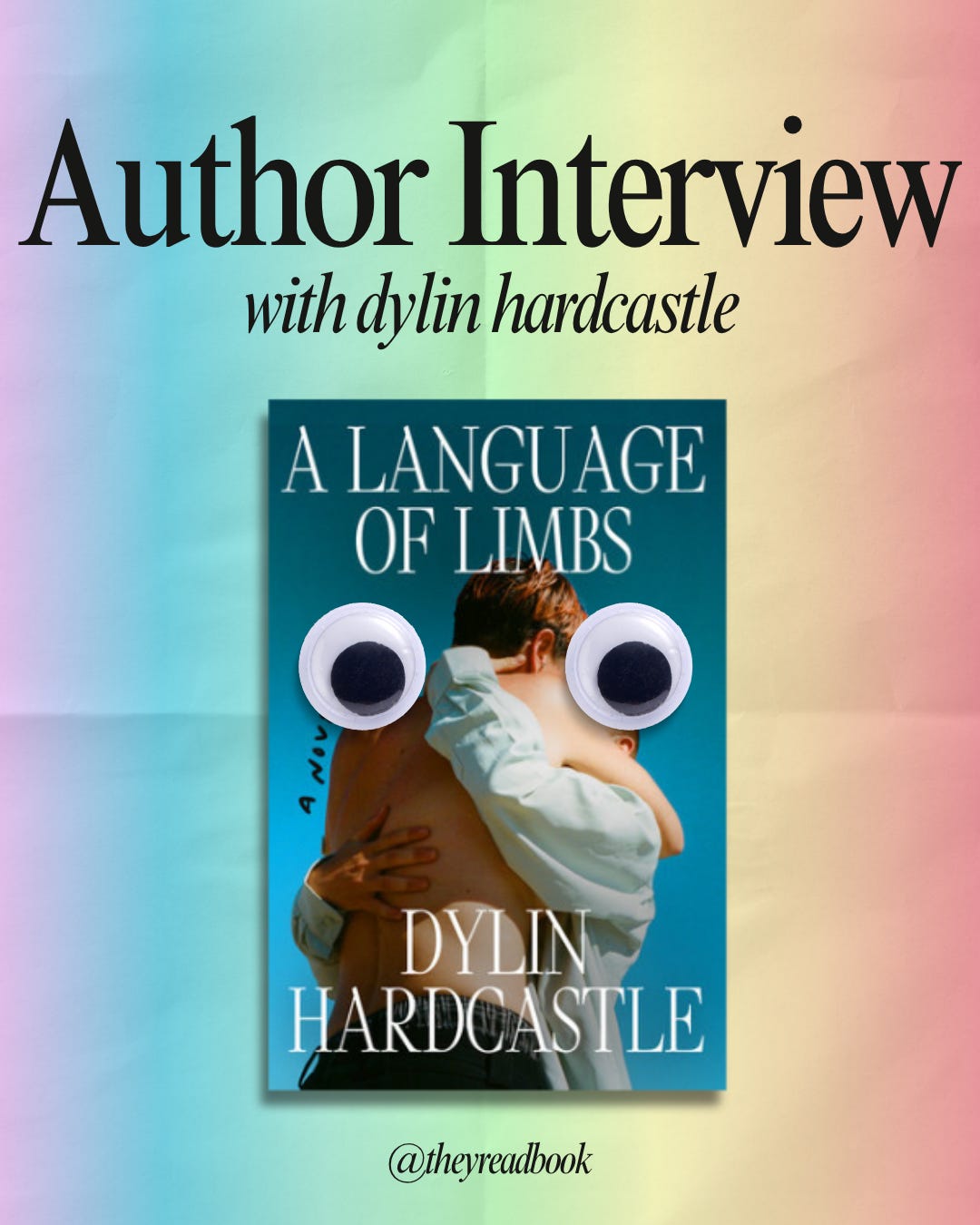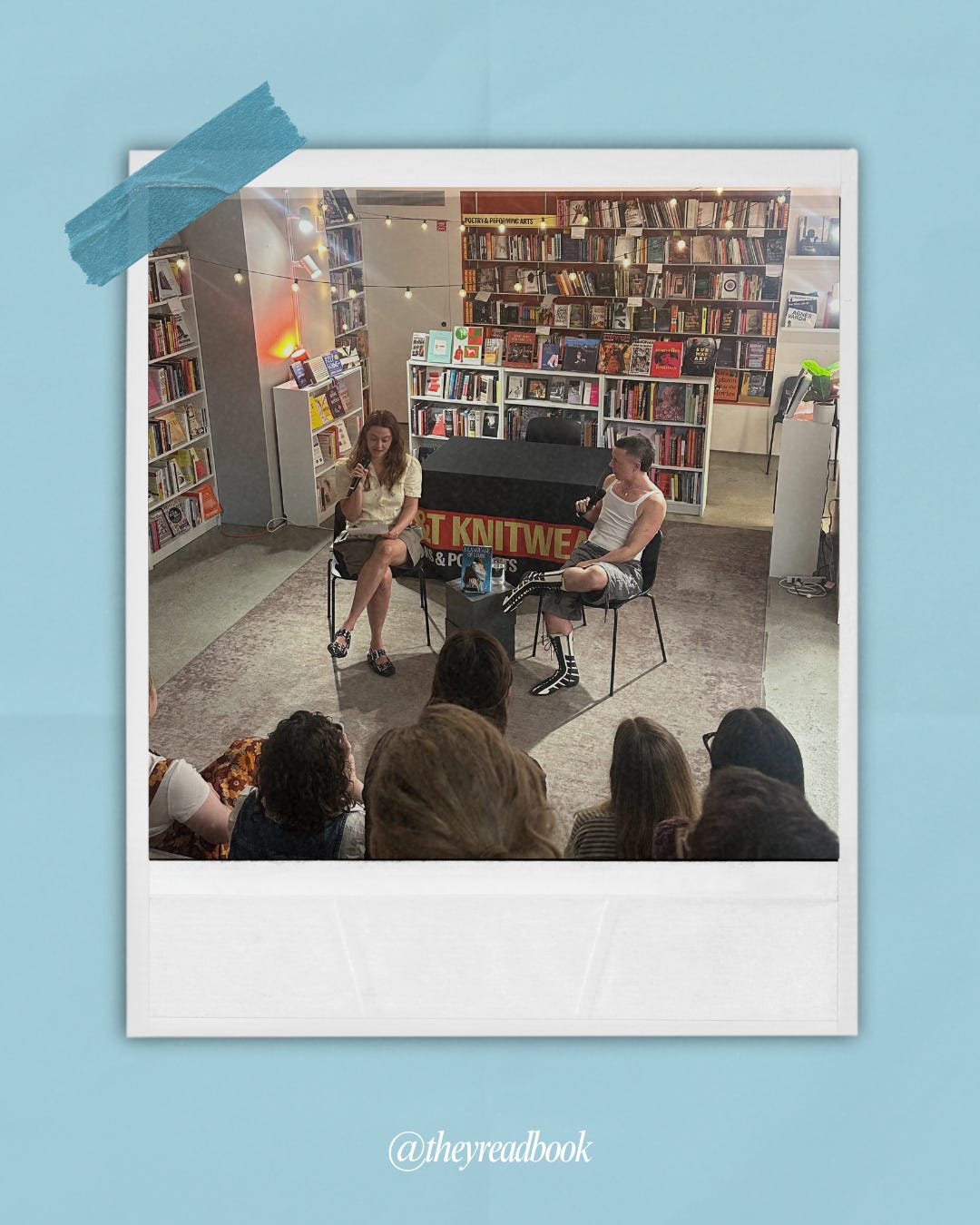I learned about A Language of Limbs through a post on Galley Brag’s Instagram – and thank God I did. If ever there was a novel for the contemporary moment, it is this one. Set over several decades in Australia, A Language of Limbs charts the story of two lives, or limbs. Limb One lives truthfully, Limb Two lives a life of repression. What is truly jarring–and moving–is the way life catches up to both of them.
The book seems to taunt you: if life will levy immense challenges regardless, why should you deny yourself the acute joy that comes from living authentically?
This Pride Month, I’ve been thinking a lot about authenticity. I would say this novel came at the right time for me, but I think the truth is that the novel is just right. I could read it a week from now, five years from now, and it would still change my heart.
Hardcastle’s US debut immediately entered my personal pantheon. I hope you’ll give it a read.
In this interview, I spoke with Dylin about craft, research, the importance of one’s own history, and the distinctly queer intermingling of searing grief and radical joy.
You can buy A Language of Limbs from Hive Mind Books here.
Your book has been out in the US for a few weeks now. What is one thing, if anything, that surprised you about how it was received by an American audience, versus an Australian one? What was it like to bring this story to a new audience?
What has surprised me has been how similarly the book has been received by audiences across the US and Australia, which reminds me of how connected fights for Gay Liberation have been and continue to be.
The title, A Language of Limbs, is repeated several times, in many contexts, throughout the book. How did this language originally come to you?
There’s a scene in the novel where a character is meditating on the meaning of family and is searching for the collective noun to describe the specific kinship of chosen family. The book is about two limbs of one story, and so the title essentially was me playing around with and imagining what the collective noun of two limbs might be.
The book is divided into two stories -- limb one (Little Dave), and limb two. Limb one is living as an out, queer person, and limb two represses her desires, attempting to live a heterosexual life. It is left ambiguous whether they are the same person, in different universes, or two separate individuals. What led you to choose to include this ambiguity?
So much of my experience of queerness, especially when I was younger, had me suspended in a state of ambiguity… My desire felt upside down – like an abstract picture I was trying to make sense of – until it was inverted, and the picture came into focus, that desire took shape, and suddenly, I couldn’t remember what the world looked like before it made sense. Ambiguity of desire is a feeling I know many LGBTQIA+ people grapple with when trying to make sense of themselves in a world that so often tries to insist queer impulses and yearnings are immoral or unnatural. I therefore wanted the text to embody that feeling so that readers themselves were suspended in ambiguity: Is this the same person, or are they two different women and I am desiring for them to meet?
This book is a beautifully rendered, heart-wrenching portrait of a time in Australian and queer history. How did you approach the research process for this novel?
I began in Pride History Group’s incredible online archive, then consumed as much media (fiction and non-fiction) that was either recorded or set during those times I was writing about. The best research, however, came through conversations I had with elders in the community in Sydney. We’re really lucky that the community in Sydney is very multi-generational and I am often on dancefloors with people much older than me. These friends were incredibly helpful in bringing the book to life so that I could capture the atmosphere of Sydney in the 1970s and 1980s, and in many ways, this novel was my love letter to them.
The novel draws on real events in Australian history, including police violence at Australia’s first Mardi Gras celebration. What drew you to write about this event, in particular?
It was such a pivotal and defining moment in Australia’s queer history. I couldn’t have written about Gay Liberation and LGBTQIA+ culture in Sydney in the 1970s and not included it.
This novel also shows the onset of the AIDS pandemic. You break from the in-the-moment voice of the novel for a moment of retrospection writing, “Four decades from now, a disease will sweep across the world, and they will call it a global pandemic [...] people will speak of this strange and unprecedented time. Again and again, they will say, this strange and unprecedented time. And for those of us who are still alive, we will say this is not my first pandemic.” Why was it important to you to juxtapose these two events?
The frustration and heartbreak expressed during the pandemic by friends who lived through the height of the AIDS crisis and were fed up hearing about how COVID was a strange and unprecedented time really stuck with me. And it was a deliberate choice to contrast the global responses to these two pandemics, as it allowed me to emphasise the complete lack of care shown by both the general public and the state at the onset of the AIDS pandemic. It also allowed me to really highlight how that lack of care deprived people of their dignity, and, ultimately, their lives.
This book contends with many types of art making -- painting, writing, criticism. As a painter yourself, how did your own experiences as a painter inform the way you wrote about Caragh and Little Dave’s art?
I went to art school and studied painting as an undergraduate. Writing about and critiquing visual art, and also understanding process through my own painting practice, is what gave me the language and the ability, I think, to write with ease about Little Dave and Caragh’s art.
A Language of Limbs draws on references to other queer art and artists, especially Claude Cahun and Marcel Moore. How did you first come to their story?
I first came across their story at the Barbican in London during an exhibition on famous Modernist artist couples. I was captivated by Claude and Marcel’s work, but mistook them for gay men as they both presented very masculine in the portraits on display. I saw they were Surrealists, and as Surrealism is my favourite Modern movement, I couldn’t believe that I’d never come across them before. I bought the book in the gift shop afterwards and started reading about them on the train home and was thrilled to learn that they were women, lifelong lovers and artistic collaborators with one of the most captivating love stories I’d ever encountered.
Both limb one and limb two are terrified of being seen, in their own ways. Often, though, it is the moments they allow themselves to be seen that lead to the most poignant moments of joy in the novel. What would you say to someone who is afraid to live in their truth?
Trust yourself. In a world that is so often distrustful of queer, and especially trans, testimonies, you can trust that you know who you are. For me, turning constantly back to my art has been a way of anchoring myself in the truth of who I am, regardless of what other people say or believe.
In an essay for People, you wrote about your belief that community is a verb. How did you hope to animate that belief in A Language of Limbs?
By illustrating the ways in which the characters practice community, how they show up for each other, and how they do and enact care in visionary and imaginative ways.
ABOUT THE AUTHOR…
DYLIN HARDCASTLE (they/them) is an award-winning author, artist, and screenwriter. They are the author of Below Deck (2020), Breathing Under Water (2016), and Running Like China (2015). Their work has been published to critical acclaim in eleven territories and translated into eight languages. A Language of Limbs won the Kathleen Mitchell Award through Creative Australia. The novel has been optioned by Curio (Sony Pictures) and is in development.



Love the way you included the People quote about community as a verb right after discussing the conversation with elders during the research process. Fantastic interview!